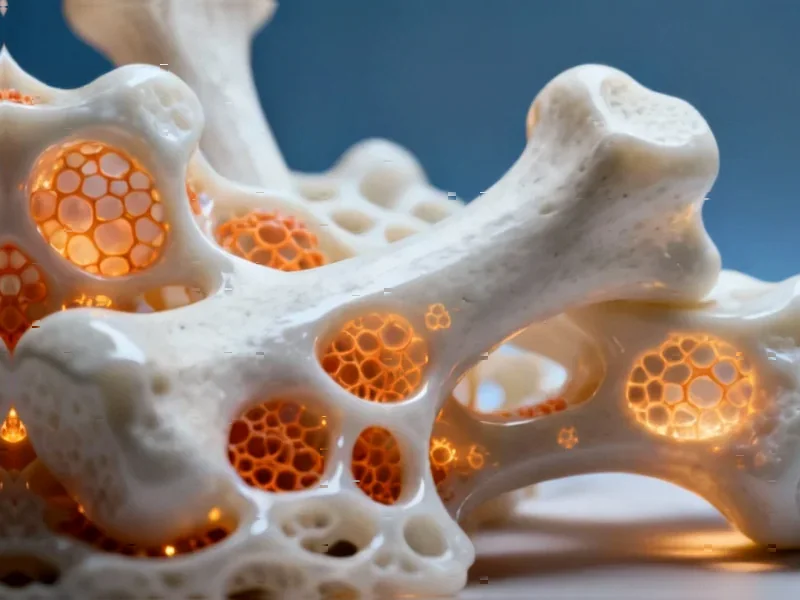Nitrogenase-Inspired Enzyme Reveals New Catalytic Capabilities
Scientists have made a significant breakthrough in understanding how certain enzymes break down sulfur-containing compounds using nitrogenase-like metalloclusters, according to research published in Nature Catalysis. The study reveals that methylthio-alkane reductases, enzymes that cleave carbon-sulfur bonds, employ complex iron-sulfur clusters similar to those found in nitrogen-fixing enzymes but with crucial structural differences that enable their unique function.
Table of Contents
Structural Insights Reveal Unexpected Similarities
Researchers reportedly heterologously produced methylthio-alkane reductase components from R. rubrum in an engineered Rhodobacter capsulatus strain and purified them using affinity chromatography. Analysis showed the reductase component forms a MarH homodimer measuring approximately 69 kDa, while the catalytic component forms a Mar(DK) heterotetramer of about 227 kDa. Sources indicate these components share the same stoichiometry as Mo-nitrogenase components, suggesting evolutionary relationships between these enzyme systems.
The report states that the purified enzymes demonstrated activity in reducing various volatile organic sulfur compounds (VOSCs), including methylthio-ethanol (MT-EtOH), ethyl methyl sulfide (EMS), and dimethyl sulfide (DMS). Interestingly, while conventional Mo-nitrogenase cannot reduce VOSCs, the methylthio-alkane reductase converted these compounds at measurable rates, with the highest activity observed for EMS at 7.9 nmol CH × mg Mar(DK) × min.
Advanced Imaging Reveals Unique Metalloclusters
Using anaerobic single-particle cryo-electron microscopy, researchers overcame significant technical challenges to determine the molecular structure of the methylthio-alkane reductase complex. The analysis revealed the presence of nitrogenase-like P-clusters and [Fe7S9C] clusters in the catalytic component, but with distinct coordination environments compared to true nitrogenases.
According to the report, the [Fe7S9C] cluster in methylthio-alkane reductase is anchored by only two amino acid residues—Cys270 and His429—unlike the more complex coordination in nitrogenases. This simpler coordination, combined with the absence of molybdenum, vanadium, and the organic cofactor (R)-homocitrate, appears to be crucial for the enzyme’s specificity toward sulfur compounds rather than nitrogen fixation.
Distinct Active Site Architecture
The study highlights significant differences in the active site architecture between methylthio-alkane reductases and nitrogenases. Analysts suggest that while nitrogenases use conserved residues like Val70, Gln191, and His195 for substrate binding and proton transfer, the methylthio-alkane reductase features different residues including Cys73, Gln74, Trp195, and Phe199 in corresponding positions.
Additionally, the report indicates that substrate access channels differ substantially between the two enzyme systems. While nitrogenase channels are restricted by hydrogen bond gating, methylthio-alkane reductase channels show no such steric impediments, potentially explaining their ability to process bulkier sulfur-containing substrates.
Functional Implications and Evolutionary Significance
Despite containing [Fe7S9C] clusters similar to those found in nitrogenase maturase Nif(EN), the methylthio-alkane reductase showed no detectable nitrogen reduction activity under physiological conditions. This finding suggests that the presence of the metallocluster alone doesn’t determine catalytic function—the specific coordination environment and surrounding protein structure appear crucial for substrate specificity., according to according to reports
Electron paramagnetic resonance (EPR) spectroscopy revealed distinct electronic properties for the methylthio-alkane reductase components, with a characteristic g = 1.91 signal serving as a fingerprint for its active site metallocluster. Researchers propose this signal indicates the presence of an interstitial carbide in the [Fe7S9C] cluster, similar to that found in nitrogenase cofactors.
Potential Applications and Future Directions
The discovery of this nitrogenase-like enzyme system operating on sulfur compounds rather than nitrogen has significant implications for both basic science and potential applications. Understanding how nature repurposes similar metalloclusters for different chemical transformations could inform the design of artificial catalysts for industrial processes involving carbon-sulfur bond cleavage.
Researchers suggest that further investigation is needed to fully understand how methylthio-alkanes bind to the [Fe7S9C] cluster during catalysis and whether similar enzyme systems might exist for processing other non-nitrogen substrates. The study opens new avenues for exploring the evolutionary relationships between different metalloenzymes and their adaptation to diverse chemical challenges.
Related Articles You May Find Interesting
- Why Legacy Storage Systems Are Failing Generative AI—And What Comes Next
- Digital Health’s Survival Strategy: Why 2025’s M&A Wave Signals Industry Transfo
- OpenBSD 7.8 and 9front Release: A Deep Dive into Cutting-Edge OS Innovations
- Cambricon CEO’s Wealth Soars Amid US-China Chip Trade War
- European Aerospace Giants Forge Satellite Powerhouse to Compete in Shifting Spac
References
- http://www.rcsb.org/structure/7UTA
- http://www.rcsb.org/structure/8OIE
- http://en.wikipedia.org/wiki/Dalton_(unit)
- http://en.wikipedia.org/wiki/Ångström
- http://en.wikipedia.org/wiki/Substrate_(chemistry)
- http://en.wikipedia.org/wiki/Nitrogenase
- http://en.wikipedia.org/wiki/Iron(II)_sulfide
This article aggregates information from publicly available sources. All trademarks and copyrights belong to their respective owners.
Note: Featured image is for illustrative purposes only and does not represent any specific product, service, or entity mentioned in this article.



